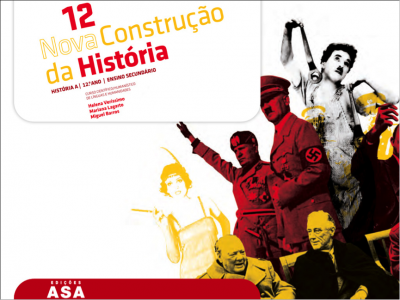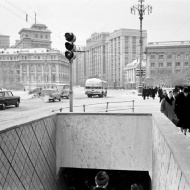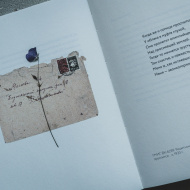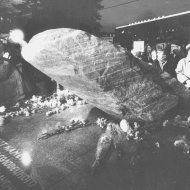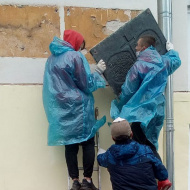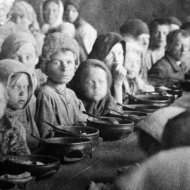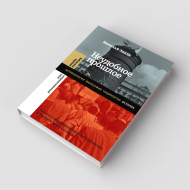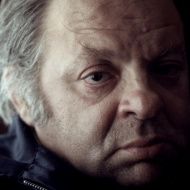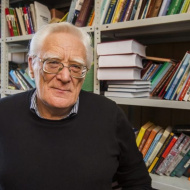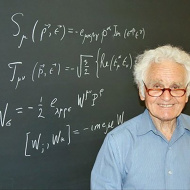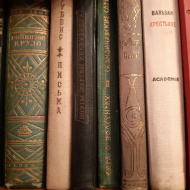Мария Тумаркина. From an unconscious state
Статья, опубликованная в Австралийском публицистическом журнале 'Griffith Review' о школьном конкурсе Мемориала «Человек в истории. Россия — ХХ век».
From an unconscious state
Something is missing from the debates about teaching history in Australian schools, even though their explosive, raw and at times distinctly personal quality must surely be a good sign. If we are not prepared to shout and bang on tables over history and kids, then surely we are, in those all-knowing words of Tom Waits, 'pulling on trouble's braids'.
Yet just like school history curriculum itself, the debates about teaching history have become tedious. On one hand, we have those who believe in history as a tool of nation building and civic pride and who decry agenda-driven, ideologically coloured, dogmatic history, infected, in their minds, with a singular contempt for the facts. The counter-argument, of course (the one I resent having to subscribe to because it seems so bleedingly obvious) is that teaching history should essentially be about developing historical consciousness. It should be about giving kids the all-important skills of analysis, critical reflection and tolerance for difference – the skills they need, first and foremost, to live good and engaged lives in the present. Untill recently I had nothing to add to these debates, except that nagging feeling that something central was consistently overlooked in them. Then, in October 2008, while on a trip in Russia, I met with several historians working at Memorial, the international historical and human rights society with active branches right across the country. It was at that point, far away from the Australian goldfi elds, that I had my very own Eureka moment.
Since 1999, Memorial has been running a highly successful national competition of history research papers for high school students. For the past seven years, this competition has been part of EUSTORY – a European network of twenty countries, which hold regular non-governmental history competitions. In Australia, we have something of this ilk – the National History Challenge for high school students in Years 9 to 12. Just like its European counterpart, the History Challenge emphasises the research-based approach to history and an active engagement with primary sources, yet there is a profound gulf between the philosophy and the real-world effects of these two initiatives. Perhaps most critically, the EUSTORY's objective is not simply to get students interested in history, but to foster historical awareness as a powerful tool of civic engagement and as an antidote to the selective, ideologically driven and cynical uses of history in the public sphere. In Australia, this all-important emphasis on civic participation through independent historical research is completely lacking. In Russia, the student papers have been regularly published in the independent media not in the name of charity or of the increasingly untenable dream of democracy but because many of them are original, powerful and good. By now I have read over a hundred of them and I am filled with awe. The astonishing thing is not simply that today's fourteen- or sixteen-year-olds are capable of thinking and writing like this, but that the forty- and fifty-year-olds in charge of this competition have managed to get it so right.
The fundamental idea is for teenagers to engage with their local history – the story, usually never told fully, of their family, their street or their town. Many entries are sparked by children coming across a monument to godknows-who, by stepping accidentally on a grave in a neglected cemetery (and recoiling in horror), or discovering that not that long ago the church everyone goes to was used as a horse stable or a wheat barn. The competition's focus is squarely on private, everyday lives and the way they have been lived through the two world wars, mass repressions and deportations, the wholesale destruction of the Russian village, famines, poverty and just about every imaginable calamity that could be thrown at human beings.
In the introduction to her paper, Darya Tkacheva – a Year 7 student from the city of Astrakhan and one of the competition's youngest participants – writes, 'I cannot agree with those adults who say, “You are too young to get involved with this. Wait till you are older.” But who can really determine when it is too early or too late? I keep on hearing the argument – children should not be allowed to rummage through this stuff. And perhaps we do not always understand all of the processes that took place in our country but we are more than capable of letting the lives of other people through ourselves and of fi guring out what is just and what is not.'
To let the lives of others through ourselves – an expression that does not translate well into English, presupposes not merely a quick sprint in someone else's shoes. Instead, you open yourself up to the fate of other people so that they are no longer the moth-bitten exhibits in the museum of history but human beings whose suffering will hurt you, whose powerlessness in the face of injustice and indifference will enrage you and whose heartbreaking choices will feel, for a moment, like your own. It is essential that by letting these people and their stories through you, you consent to being changed by them. 'What can the story I tell you now add to “Archipelago Gulag”', writes Polina Reutova from the town of Perm, but 'coming across this story “added” something to me if you understand what I am saying.' If we don't, Polina, we are the fools, for this unquantifi able, transformative something you describe with such gentleness is precisely the historical consciousness that we should be desperate to foster in our kids.
Unsurprisingly, Memorial research papers do not look anything like essays or extended homework assignments. The majority of them are serious and original pieces of historical refl ection and analysis that engage with the undocumented, the unknown or the largely forgotten, that venture into places well off the map of offi cial historiography. As such, they are small but all-important acts of defi ance in a country where the clock is clearly ticking on any independent historical research. All across Russia, both regional and state archives, which started opening up in the late 1980s, are becoming more and more unwelcoming to historians. The access to many historical documents is disappearing in front of researchers' very eyes. Independent historical organisations, such as Memorial, concerned with the preservation and transmission of historical memory, are raided, kept under constant surveillance and repeatedly threatened. As to history curriculum at schools, it fi nds itself, tragically but by no means unexpectedly, at the vanguard of the government-led ' rehabilitation' of the Soviet regime and, most cynically, of the fi gure of Stalin. At the same time, in various regional centres, government-run history essay competitions use the name of the Memorial initiative in the attempt to deceive school kids and their teachers and to displace the Memorial competition altogether. In keeping with the Putin-Medvedev revisionist stance, their agenda is diametrically opposed to that of Memorial. The fake competitions are peddling the patriotic Soviet history complete with visionary leaders, great victories and unprecedented achievements. The fate of millions of people shot, made to rot in camps, displaced and exiled as well as of their families are yet again presented as the inevitable ' excesses' of the country grappling with enormous challenges of bloody wars and swift industrialisation.
'Our saving grace,' says Irina Sherbakova, a well-known historian and the competition's organiser, 'is the work we do with teachers and the focus on family history.' Family history, as uncovered and documented by the new generation of today's adolescents, may just be the most powerful antidote to the current falsification and fabrication of historical narratives, even when it comes to the event central to the revisionist push – World War II. Known as the Great Patriotic War, World War II is widely regarded as the one resounding victory in a century of senseless suffering – if you are prepared to disregard its cost, of course. The cost was astronomical – twenty million is the official number of lives lost, close to thirty million is what more recent estimates suggest. Yet the memory of the war is consistently being substituted with the memory of the victory as a way of legitimating the fi gure of Stalin and the seven decades of the Soviet regime more broadly. Personal histories of the war act as a counterforce to this born-again patriotism because they essentially humanise the war. Gradually, organically, we see in students' papers pathos and zealotry replaced with empathy and understanding.
This is not say that family history and oral history in general should be seen as some kind of pure, revolutionary force that speaks truth to power, even if in a little person's voice. There is little purity in people's memories – they are not only selective and deeply fl awed but also particularly sensitive to societal pressures and fear. Sometimes people unconsciously replace their own experiences with newspaper headlines. Sometimes, equally unconsciously, they do the opposite, assimilating things they have read or heard about as their own experiences. Sometimes (actually quite often) they struggle to speak in their own voice, slipping into the endlessly repeated idioms and incantations. And yet in today's Russia, where there are virtually no memorials or plaques to the millions who died in Gulags, where so many of the dead have simply been thrown into the ground like dogs, people's memory remains the most precious currency. 'What could people take in memory of their past,' writes Sherbakova, 'what could they save and keep, these special deportees, Gulag prisoners, evacuees and those who were bombed or forcefully taken to Germany? … What family relics are kept in millions of Russian families that had “24 hours to pack” and were shipped to Siberia, what valuables? Whatever tiny little bits and pieces, a letter here and a scarf there, what remains fi rst and foremost is memory alone.'
Today's adolescents in Russia are the last generation still able to encounter and speak to the living witnesses and carriers of the memory of Lenin's and Stalin's legacy. And for many of these witnesses, their moment of truth has finally arrived. As they near the end of their lives, finally, their need to share stories and documents is stronger than their fear, the trauma of re-immersing themselves in the past and their deep reluctance to speak. These are the last conversations of this kind and they carry a profound signifi cance. Memorial receives more than three thousand entries each year. In 2007–08, for instance, students from twelve hundred towns and villages took part in the competition. Organisers have been surprised not only by the success of the competition but also by the largely regional nature of the entries received. The expectation was that children from Moscow and St Petersburg would dominate the competition. In reality, most of the entries came from regional centres, small towns and villages. Interestingly, the same pattern is replicated in most countries involved in EUSTORY. The further away you get from metropolises, the more pronounced, it seems, is the hunger of children for history.
Ekaterina Remezova, a Year 11 student from the Russian town of Vladimir, was able to reconstruct the fate of her family on the basis of extensive conversations with her grandmother and the fragmented but unexpectedly fertile family archives.
'The only task I have set myself,' she writes in the introduction to her work, 'is to attempt to tell about those who, having unwillingly been turned into toys in the enormous and cruel social experiment, were simply human beings desperate to make a life for themselves, desperate simply to survive, in those years.' Reasonably prosperous merchants before the 1917 Revolution, Ekaterina's family endured a swift confi scation of their business and property under the newly-formed Soviet regime and the sudden homelessness that came with it. And then, ever so swiftly, there came hardships, relocation in search of livelihood, the arrest of her great-grandfather on the fabricated charges of the anti-Soviet activities, camps and, perhaps most poignantly, the daily struggles endured by the family left behind.
The most powerful part of Ekaterina's paper describes the decision of her great-grandmother, Valentina Mikhailovna, to divorce her repressed husband in a desperate attempt to keep herself and her baby daughter, Ekaterina's grandmother, alive. ' It took a very long time for Valentina Mikhailovna,' writes Ekaterina, 'to finally go ahead with the divorce, even though it was fi ctitious. She struggled because of her upbringing, and because the marriage was not only listed in the Marriage Registry but also consecrated in a church.' For a long time Valentina Mikhailovna could not forego the oath she gave to stand by her husband in sickness and in health. Yet it was her husband who, before being taken away, begged Valentina to divorce him in the name of their young daughter. This is what Ekaterina Remezova writes about her great-grandmother: 'Alone, with a tiny child, without a roof over their heads, with no money for work, humiliated and cornered by circumstances, she had no choice but to file for divorce.' This level of understanding and compassion is humbling. To get inside the nightmare faced by your great-grandmother, to reconstruct it so vividly, to know that it, in all its poisonous, soul-destroying power, was replicated in the lives of millions of wives and children of the enemies of the people – this is what the emphasis not merely on teaching history, but on developing historical consciousness, can produce.
What happened is really simple. A grandmother and granddaughter talked like they had never talked before. A grandmother said things she had never said before – fundamentally important things. A family history that so easily (with the passing of the grandmother) could have remained fi lled with shadows and ghosts was rescued from the oblivion. The chain of transmission remained unbroken. Ekaterina is now the guardian of her family memory. These are the words of Polina Gerasimenko, a Year 10 student from the town of Ulyanovsk: 'While my eighty-three-year-old grandmother is still alive, while her children who know so much about their parents and grandparents are alive too, while there are things that testify to the past, I believe it is important to engage with that past so that my children and grandchildren can draw the strength of spirit and character from the generations before them.' Polina's is a beautifully rendered description of memory transmission – it is not merely information that is traveling from one generation to another, but strength of spirit and character.
There is no question that history should foster skills of critical and compassionate reflection and analysis. But it is not enough to get students to pull documents apart and question the 'received wisdom'. The Memorial competition lets us peek into what happens when kids step into memory's circle, when they get to connect with history that is both personal and heartbreaking. We watch them become crushed by the weight of this history and then struggle to rebuild themselves and their faith in the world. We watch them fight to save their souls from cynicism or apathy. And every time they win, we witness a small miracle. There is a great deal of talk about the importance of turning Australian schoolchildren into active, empowered participants. And this emphasis should, of course, be welcomed, except that much of the time it sounds like an affectation. 'Come on, kids, let's play history detectives, let's get down and dirty with primary sources.' Pretending that the opinions of these children matter apparently helps achieve better educational outcomes. There is nothing wrong with this concept, in theory. Yet the Memorial competition shows us what can happen when we stop pretending, when we start taking children and their opinions seriously and when we finally stop serving them diluted history.
Three Year 11 students from the village of El'niki in the Russian region of Mordovia came across two photographs of the man who, in the early decades of the twentieth century, had been their village priest and schoolteacher. 'In the first photograph,' they write, 'we can see a handsome, confident village teacher Vasiliy Ivanovich Kashin. His gaze is strict and composed. Thick hair is neatly cut and smoothly combed back … his face is smooth, without wrinkles. It is easy to think that a long and interesting life awaits this man in the photograph.' The second photograph is taken in 1930 after Kashin's arrest. In this photograph is 'a real old man: bags under his eyes, wrinkly face, hair hanging like icicles, uncombed grey beard. His gaze is dreary and anxious. He is wearing a peasant undergarment. His shoulders are slumped.'
This once proud, strong, self-possessed man has been totally defeated. How? Why? The three students were drawn into analysing documents, letters and eyewitness accounts of relatives and friends all in order to understand why 'a young, strong man has come to the end of his life in such a terrifying way'. At the end of the research, they organised a family reunion in their village for the relatives of Vasiliy. Scattered across Russia, many of them met for the fi rst time with some previously unaware of each other's existence. Such an occurrence is not a rare outcome for the Memorial student papers. A signifi cant proportion end up creating tangible effects in the real world. Some lead to the erection of memorials and plaques in small towns and villages, while others produce new historical exhibitions for the general public and occasionally force the pay-out of government compensation or the reburial of human remains.
A few years ago in the small town of Kotlas in the Arkhangelsk region, routine building works uncovered human bones and remains. The local adults were, of course, less than impressed but a lifetime of dissatisfi ed passivity meant they simply waited for authorities to do something about it. Meanwhile a group of high school students decided to take matters in their own hands and started collecting the scattered bones, which were being even further destroyed by passing cars. The adults asked, 'Aren't you scared to collect human bones?' The kids replied, 'We are not scared to collect bones, we are scared to walk on them.' The bone-collectors from Year 9 felt the need to find out who the bones belonged to and how they had come to be completely forgotten. And so their research paper was born. The bit of road where the bones were accidentally unearthed used to belong to a factory before being bought by a private company. But much earlier, in the 1940s, it had been a makeshift cemetery, the final resting place for many prisoners from the nearby corrective labour camps and special settlements who were brought in to build a bridge over a river. The fatality rate at the construction site was extremely high due to food shortages, harsh physical conditions, disease and lack of medication, and constant industrial accidents. The dead were buried in trenches right alongside the site. In the 1950s when the makeshift cemetery was about to be swallowed up by a new industrial site, the residents of Kotlas were given the opportunity to re-bury their relatives. It was an unabashedly cynical offer since Gulag prisoners were never local. The graves were violated, built over and finally forgotten. As a result of the students' research, the remains were re-buried and an exhibition about the history of the bridge and its construction was put together by the students themselves. This is how the local chapter of the little-known history of the mass use of Gulag labour made its way into the psyche of the little town of Kotlas. This is how children succeeded in stirring and awakening adult memory.
Timur Gaisin and Maksim Nazarov are students of the Magnitogorsk Technical College who went looking for information about a group of former students from their college who were arrested in the 1930s and sentenced to the labour camps. Initially Timur and Maksim turned to the local archives, where even a quick peek revealed countless innocent lives ripped to shreds on the basis of cynically fabricated cases. Even at this early point the boys wondered long and hard about whether it would be best to leave the sordid business of the past alone. But memory, they discovered, cannot be artifi cially contained. It cannot be shoved back into a box. 'It is there and that's it,' they write. For a couple of young men born in the cynical, history-for-hire era, to recognise historical memory as a kind of an uncontainable force, not simply a benign resource, is a profound discovery. 'We need to tell this terrible truth,' Timur and Maksim decided. Why? 'Because the evidence is hidden behind the steel frames of the archives. Nothing can be checked out. Nothing can be proven.' In the 1930s, Magnitogorsk was one of those young industrial Soviet cities that could never meet its need for high-quality technical specialists. More and more technical colleges opened, churning out engineers, metallurgists and electricians. At Magnitogorsk Technical College, two of the students studying to meet the demand were Iosif Tkalich and his friend, who Timur and Maksim refer to only as 'G'. They were the same age but had markedly different characters. Iosif was modest and reserved, while G was extroverted and intent on becoming 'one of the guys'. Distinctly mediocre in his academic achievements, G was hungry to be noticed in all kinds of extra-curricular activities. Iosif, on the other hand, was one of the best students in his year. Unrivalled in his mastery of mathematics, he helped G with his studies. Fast-talking, always visible and on fire, G desperately wanted to lead, to be noticed and promoted. Yet it was the tongue-tied Iosif who was invariably singled out by his peers for various leadership positions.
G ended up denouncing Iosif. In those years it did not take much so he came up with some wild anti-Soviet activity and soon Iosif was arrested and sentenced to years of hard labour. Iosif managed to survive the labour camps but spent the rest of his life fighting against the prejudice encountered at every step by the 'former' enemies of the people. He never had a 'normal' life and was never even able to start a family. As to G, he did fi nish college but, lacking in technical expertise and a general level of education, never became even a mediocre specialist. Instead, as Timur and Maksim discovered, he spent the rest of his life being a Party activist. He fought in World War II before being wounded. He went on to sit on committees, distribute funds and tirelessly carry out the 'ideological' work. And so it seemed that he did become 'one of the guys' after all. 'Who knows if he remembered the past,' write Timur and Maksim,' especially since it is unlikely that anyone at his factory knew anything about what he had done. But he was deeply mistaken if he believed that the distant past had sunk into oblivion and no one could now accuse him of anything.' I read and marvel at the boys' contempt for G. We are quick to denounce contempt, but I am not so sure we should. Not with these boys. They earned it. They did the work. Besides, if we are to explain to kids how totalitarianism works, how dictatorships are built and sustained, they need to be able to smell guys like G, men who represent that grey army of functionaries and bureaucrats who always claim to just 'follow orders'. As an ageing man, Iosif wrote a letter to G telling him of his life after the arrest. Timur and Maksim chose, very wisely, to include the full text of the letter in their research paper. Profoundly dignified and clear-sighted, the letter lacks both pathos and any lust for revenge. It is – and this fact is not lost on the boys by any means – a remarkable historical document, which they have brought to light.
From what textbook could Timur and Maksim have learned so vividly that, in Stalin's Soviet Union, a single denunciation, no matter how unsubstantiated or fantastical, could provide suffi cient grounds for arrest, camp internment, a broken life, even death? What better story to make them see that not everyone behaved in the same way and that especially in the 1930s a certain category of people used the machinery of the state terror to settle their personal scores? A neighbour from a communal fl at wanted an extra room. A scorned lover wanted revenge. Mediocrity wanted brilliance squashed. One moment of human weakness, parasitism or jealousy held enormous consequences. By painstakingly piecing together the story of Iosif and G, Timur and Maksim have come to see that under Stalin, petty, gutless functionaries like G had the upper hand until most of them too were squashed by the machine. Perhaps it can be argued that the Stalinist society cloned Gs en masse. Yet, no matter how hard the system tried to turn people into embittered lone wolves interested only in their own survival, it did not succeed. In the end, G was hardly an exception, but neither was Iosif.
Historians speak of the labour of memory or memory-work. Remembering, they say, is not some recreational pastime. It is hard, confronting work. In the end, every generation, every person has to make a conscious choice about whether or not to take on this arduous task. I suggest that we begin to speak of 'tolerance-work' because tolerance is not a starting point, handed to kids in a series of sexy slogans, but a destination. Real tolerance cannot be arrived at without a bitter struggle against our own and our peers' urge to condemn, judge, dismiss or mythologise all that is different from us, including the experiences of previous generations. The promotion of easy, ersatz tolerance is antithetical to the development of genuine historical consciousness. This thoughtless, ready-made kind of tolerance is little more than a glorified extension of ignorance as bliss. Under its guise, we are teaching our kids the joys of complacency, of the great Australian 'middle of the road', the virtues of eyes wide shut.
Aleksey Evstratov, a Year 11 student from the town of Borisoglebsk in the Voronezh Region writes about the shock of coming across his town's Jewish history. A non-Jew in a small Russian town in the country, where the Holocaust is largely forgotten, Aleksey travels a truly immense distance in reconstructing the fate of Borisoglebsk's Jewish community. 'For ten years I have been going to my school past a Jewish cemetery, paying no attention either to the condition it was in or to the barbaric behaviour and vandalism that had been taking place there virtually round the clock … And only three months ago I found out that all the time I had, in the words of my teacher, been walking past the cemetery in “an unconscious state” … Now I walk past it with a sense of unease and shame …'
The cemetery lies neglected and vandalised. The graves are desecrated. Everywhere you look there are piles of rubbish and syringes and, of course, graffiti. Aleksey fi nds himself nursing a million whys. Why didn't someone stop him when he played 'war' in the cemetery? Why didn't someone throw him out of what must be considered a sacred place for all people? Why did the authorities ignore all the barbaric behaviour at the cemetery? Why do the Jews of his town, of whom there are around a hundred, allow this to happen to the final resting place of their people? Are they too walking around 'in an unconscious state'?
Ultimately, the Memorial competition is about children illuminating and beginning to counter this unconscious state, a state in which most of Russia now walks past its desecrated cemeteries. Yet to do so, they must first learn a fundamental fact about history. History passes through people's lives like a series of electrical currents – or, perhaps more aptly, electrical shocks. People's lives, in other words, are not merely shaped by history (the little ' pretend' word we like to use in Australian schools and universities), but are charged and convulsed with it. No matter how many decades have passed, this kind of history remains burning, radioactive. You engage with it at your own risk, yet by really engaging with it, you may just be able, tiny bit by tiny bit, to start changing the present.
In the seminar he gave last year at the University of Melbourne, one of the world's most distinguished and innovative contemporary historians, Dipesh Chakrabarty, raised the question, which (thankfully!) refuses to go away – 'In what sense and under what conditions can history be a public good?' Beyond political debates, beyond politics of representation, beyond blame and claims of victimhood and entitlement, there are ways in which historical awareness and knowledge must underpin any culture of genuine civic participation. This is precisely the philosophy behind the Memorial competition and behind the EUSTORY in general. And it really works. This is the idea that seems conspicuously absent from most of the debates about teaching history in Australian schools – the idea of Civic Participation or Engagement. Is it too much for us?
Maria Tumarkin is the author of Traumascapes (MUP, 2005) and Courage (MUP, 2007). Her essay ' Life in translation' appeared Griffi th REVIEW 19: Re-imagining Australia

